Eight Ways Biden’s Plan Could Build Equity into Our Infrastructure
From the workplace to the streets to the kitchen, the administration’s agenda could build back better for all. Here’s how.
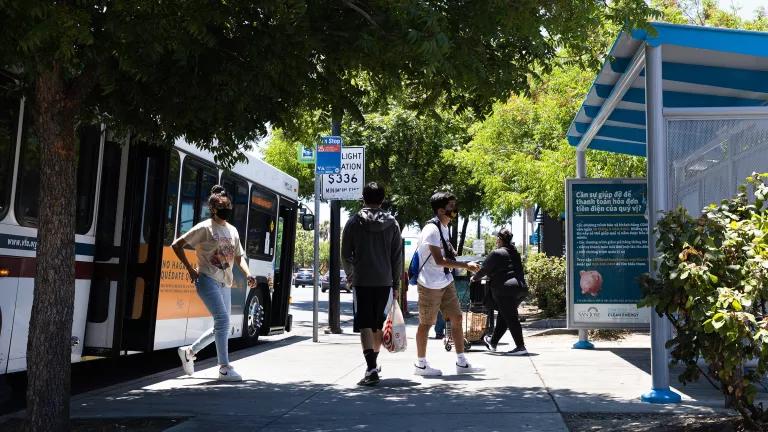
A newly installed bus stop on Story Road in San Jose, California, June 15, 2021
The infrastructure upholding our society does not serve us all equally. Low-income residents and communities of color more acutely experience the deficiencies in our health-care, transportation, utility, legal, school, park, and industrial zoning systems. The injustices add up and compound each other, often resulting in harder lives, poorer health outcomes, and stunted opportunities. The COVID-19 pandemic exposed these cracks in our social fabric, and the climate crisis threatens to widen them even further. As we attempt to strengthen our infrastructure in preparation for a warming world, enhancing equity isn’t only the right thing to do—it’s the smart thing to do.
Measures that address equity from Biden’s Build Back Better platform made their way into the bipartisan infrastructure bill passed last month—but that bill fell woefully short. The upcoming congressional budget reconciliation process offers another chance to enact Biden’s plan in full, adding in even more ambitious climate and public health investments. The platform aims to build a fairer, more resilient future for us all. Here are a few ways how.
Millions of High-Quality Careers in Clean Energy
Biden’s plan could create a new generation of good-paying union jobs—from solar panel installation to clean car manufacturing—that can support families and revive small towns while offering security and protection to workers. Importantly, the plan would ensure those jobs reach the low-income communities and communities of color who have been excluded from clean energy investments in the past and yet remain the most harmed by polluting industries, the pandemic, and climate change. As it stands, more than three million people work in clean energy across the country—three times as many as in fossil fuels—and these industries were growing 70 percent faster than the U.S. workforce overall in the five years before the pandemic. Biden’s plan can harness that momentum to ensure everyone has a place in our clean energy future.
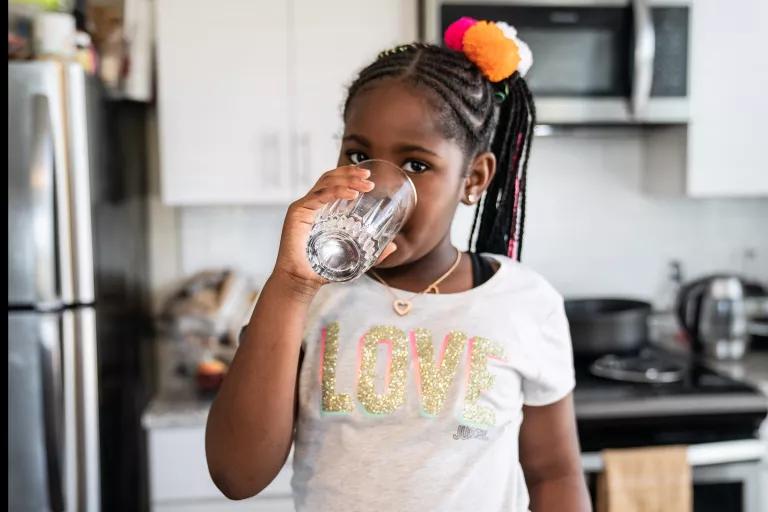
Lead-Free Drinking Water
Every day, millions of Americans drink lead-contaminated tap water, posing serious and irreversible health risks, particularly to children. Low-income communities and communities of color are more likely to be served by water systems that consistently violate federal drinking water standards and face an inadequate government response. The Build Back Better agenda aims to dig up the millions of lead pipes and service lines—the primary source of lead contamination—and replace them at no cost to homeowners. Unfortunately, the Senate’s bipartisan infrastructure bill doesn’t include the funding necessary to fully meet that goal. Instead, it offers up resources to remove only a third of the nation’s pipes, keeping the door open to future drinking water crises.
Sewage-Free Flooding
After heavy rainfall, stormwater can overwhelm outdated wastewater treatment systems, causing them to overflow with a mix of stormwater and sewage. The runoff can then contaminate drinking water, flood streets and homes, and make people sick—which happens more often in areas that can’t afford updates to their drainage systems. Biden’s plan seeks to invest in those communities through upgrades, such as improved filtration systems and green infrastructure that would install parks, green roofs, and rain gardens that absorb and capture rain right where it falls. Such infrastructure enhancements would also make communities more resilient to the effects of climate change, both by mitigating flooding during extreme storms and cooling off neighborhoods during more frequent—and life-threatening—heat waves.
Easy-Access Public Transit
Curbing climate-busting tailpipe pollution requires a reliable mass transportation system that works for everyone. As it stands, communities of color make up the majority of public transit users—but 40 percent of America’s buses and 23 percent of its rail systems remain in either marginal or poor condition. While the bipartisan Senate bill represents the biggest federal investment in public transit ever, including the largest influx in funding for Amtrak since its founding in 1971, it still funnels historic amounts of money into car-centric highway systems without requiring highways to be repaired before being expanded. The bill also only sets aside a fraction of the funds necessary to address the legacy of harm that highways have caused by physically segregating communities of color and overburdening them with vehicle pollution. The Build Back Better agenda envisions a modern and expansive public transit system—one that makes it easy to hop on a bus or a train no matter where you live, and one that revitalizes the economies and downtowns of underserved communities.
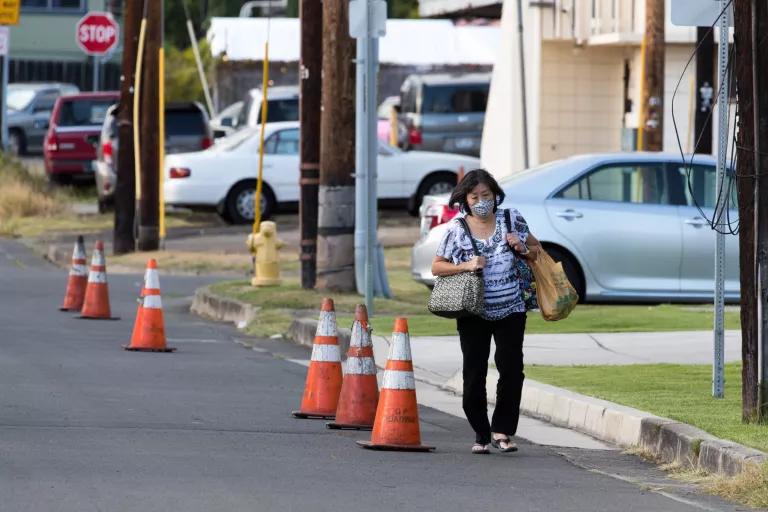
Safer Streets
Low-income communities are often last in line to see expanded bike lanes or new sidewalks, making their streets more dangerous for riders and walkers. Between 2010 and 2019, the rate of Black pedestrians killed by drivers was 82 percent higher than it was for white pedestrians, even when accounting for differences in overall walking amounts. The fatality rate for Native American pedestrians was 221 percent higher. Low-income populations and communities of color commonly live in outlying city neighborhoods without their own transit hubs that are accessible by foot. Infrastructure designed to help make those first- and last-mile connections can go a long way toward getting people safely from their homes to bus stops or to train stations. The Build Back Better agenda aims to direct funding toward protected bike lanes near public transit stations and sidewalks set apart from the road. This would not only make communities safer to travel in but also less polluted, since it would decrease dependence on gas-guzzling vehicles.
Revved Up Electric Vehicle Markets
In a study conducted across the Northeast and Mid-Atlantic, the Union of Concerned Scientists found that residents in communities of color breathe in 66 percent more harmful exhaust pollution from cars, trucks, and buses than those living in white communities. The Build Back Better plan could speed up the shift to electric vehicles by helping to create thousands of jobs manufacturing clean cars and batteries; providing consumers with purchasing incentives enabling them to afford those clean cars; and investing in a well-connected network of charging stations across the country. (That way, the benefits of electric vehicles can enhance all types of communities.) The bipartisan infrastructure bill begins this process but doesn’t yet go far enough.
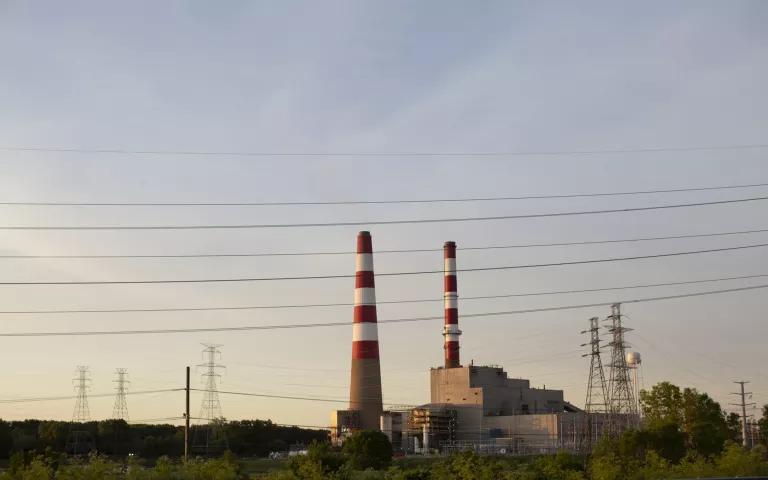
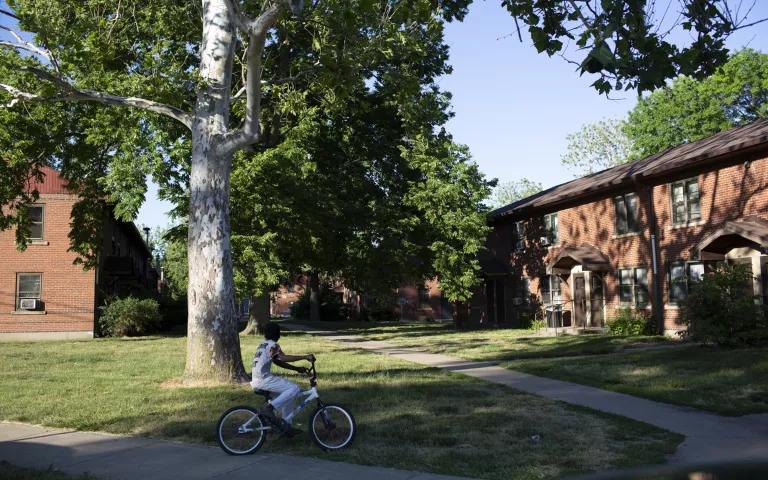
Less Fossil Fuel Pollution
The Build Back Better agenda aims to secure 100 percent of the country’s electricity from clean sources like wind and solar by 2035. Meeting that goal is particularly important for low-income communities and communities of color, which are more likely than white communities to be located near polluting facilities, like coal-fired power plants. While the Senate’s latest infrastructure deal includes some measures to expand and upgrade the electric grid and fund clean energy research and development, they’re nowhere near the level of magnitude needed to swiftly and fully decarbonize the grid. To fuel the transition by 2035, the country will also need a clean electricity incentive program and additional clean energy tax credits.
Fewer Leaky Oil and Gas Wells
In rural communities across the country, fossil fuel companies have abandoned millions of oil and gas wells without properly sealing them. Left open, the wells can leak oil and other toxic contaminants like methane and benzene and can even explode—posing clear environmental and safety hazards. Biden’s plan needs to simultaneously strengthen rules for oil and gas companies that fail to clean up their messes and help fund the capping of wells that remain unclaimed, which would be a huge job creator. This cleanup process is critical for rural communities of color, especially Indigenous People living on tribal lands in the West, where the location of such wells has often gone undocumented.
This NRDC.org story is available for online republication by news media outlets or nonprofits under these conditions: The writer(s) must be credited with a byline; you must note prominently that the story was originally published by NRDC.org and link to the original; the story cannot be edited (beyond simple things such as grammar); you can’t resell the story in any form or grant republishing rights to other outlets; you can’t republish our material wholesale or automatically—you need to select stories individually; you can’t republish the photos or graphics on our site without specific permission; you should drop us a note to let us know when you’ve used one of our stories.


What Is the Justice40 Initiative?
America’s Failing Drinking Water System
Causes and Effects of Lead in Water